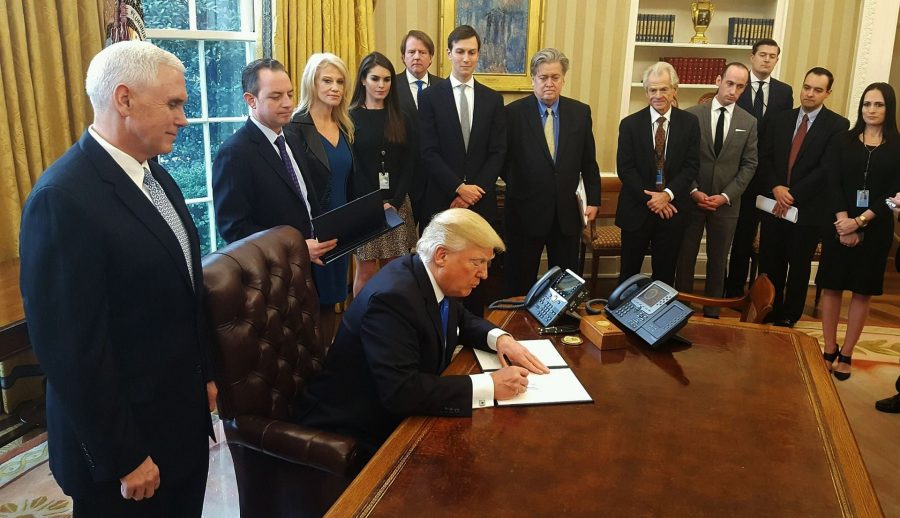Executive Orders: Legality and Limits
Digesting the contemporary events in the United States this past week is definitely an arduous task. President Trump’s administration caused turmoil and fear with executive orders of all kinds in an attempt to show that his promises during campaigns weren’t only a cheap simplistic propaganda seeking votes. In acting upon campaign promises, Trump created enemies, and that might have a high cost to him and the country. With such notorious executive orders, the common question is: what are the limitations on executive orders and the executive power, and how can other branches of power interfere?
Most people are often used to the regular process of a bill turning into a complete exercise of law—the bill is sent to Congress, and, depending on its classification (amendment, statute etc.), it needs either two thirds of Congress or “half plus one” to pass. Although most laws are generated through this approach, it is not the only one within government, as Mr. Trump and several other presidents have shown that the executive branch can issue direct orders that effectively become laws. According to political science professor, David Schultz, “These Executive Orders have been issued by presidents since the time George Washington became president, and over time they have been used by almost every president, often either with support or controversy.”
The idea that the executive leader issues orders without the bureaucratic progress of Congress might be contradictory and even alarming, especially with Trump sitting in the Oval Office. It might seem an offense to the separation of powers, but they have legality, and moreover are part of the political structure that allows the executive branch to manifest its power. According to David Schultz, “From 1789 to the end of the Obama presidency there have been nearly 14,000 executive orders.”
Now that the legality and origin of the executive orders has been established, how can other branches intervene? As seen in other countries (Brazil), the judicial branch can and already has intervened. In the United States, the Federal Judge from Seattle, James Robart, has temporarily suspended Trump’s ban of almost sixty thousand visas within the immigration ban on seven distinct nationalities. A judicial intervention can be performed by any Federal judge in the United States. Although the character of this suspension is temporary, both Robart and Washington’s attorney general Bob Ferguson are preparing measures of protection to restrain Trump’s immigration ban until further notice. In Ferguson’s words: “The constitution prevailed today […] no one is above the law, not even the president. “
Although the White House Press Secretary has already stated that the President will seek legal procedure to defend his orders, it’s obvious that the independence of judicial powers was strengthened. On the other hand, the harmony between them and executive powers might come into question throughout Trump’s first term as judicial authorities demonstrate they are skeptical of his decisions.
That being said, Congress as a whole can also play a role in confronting an Executive Order, as has happened before. Chris Stevenson from The Independent says: “Firstly, if Congress—or usually the party with a majority across one or both Houses—objects to an order it can rewrite or amend previous legislation, or subject new legislation to overrule the order. A two-thirds majority across Congress is normally required.” As stated before, the orders must follow the Constitution and its amendments, and thereby can be questioned in Federal and Supreme Courts.
In essence, although controversial, Executive Orders are vital for when the country needs fast regulations or decisions without the bureaucracy of voting, and they have been issued by all 44 American presidents. Their judicial validity and morality, however, has to be approved by other branches of power, which may cause internal conflict and the depletion of harmony between these same branches of power.
Sources: The Independent, Globo,

In his third and last year as a Talon writer, Henrique, a senior and Graded lifer, attempts to assimilate what happens with Brazilian politics in his monthly...








